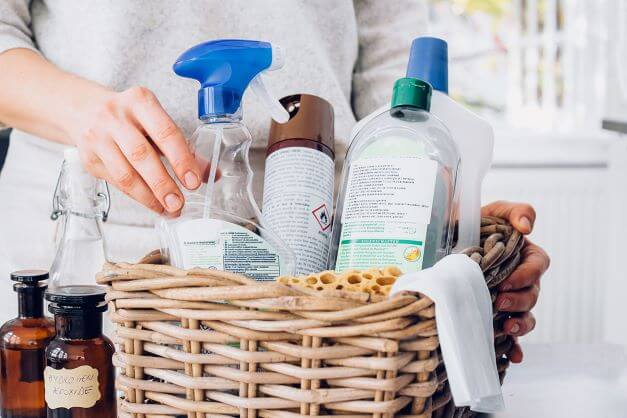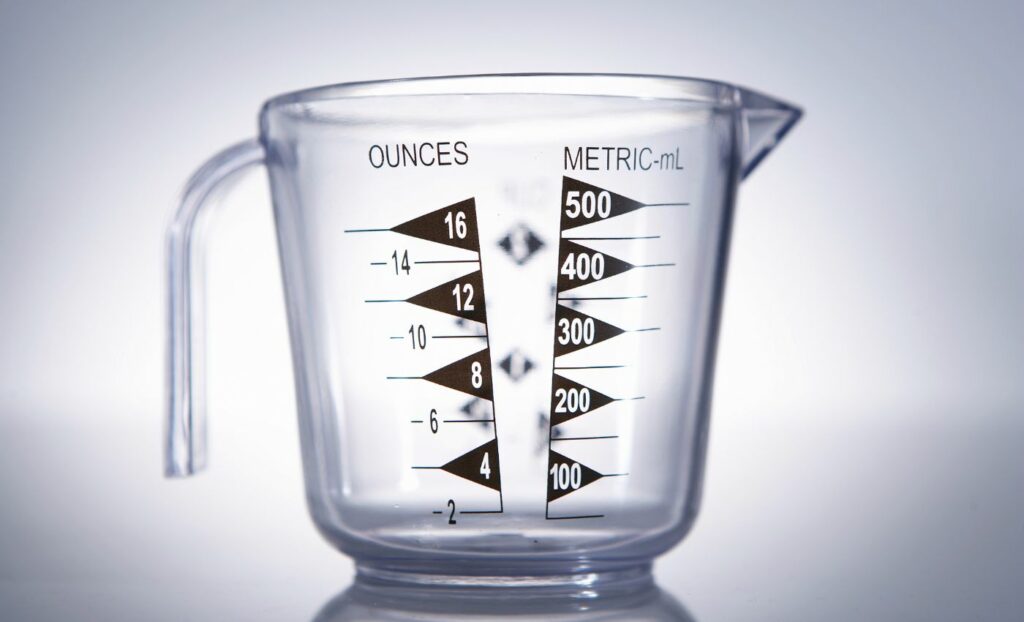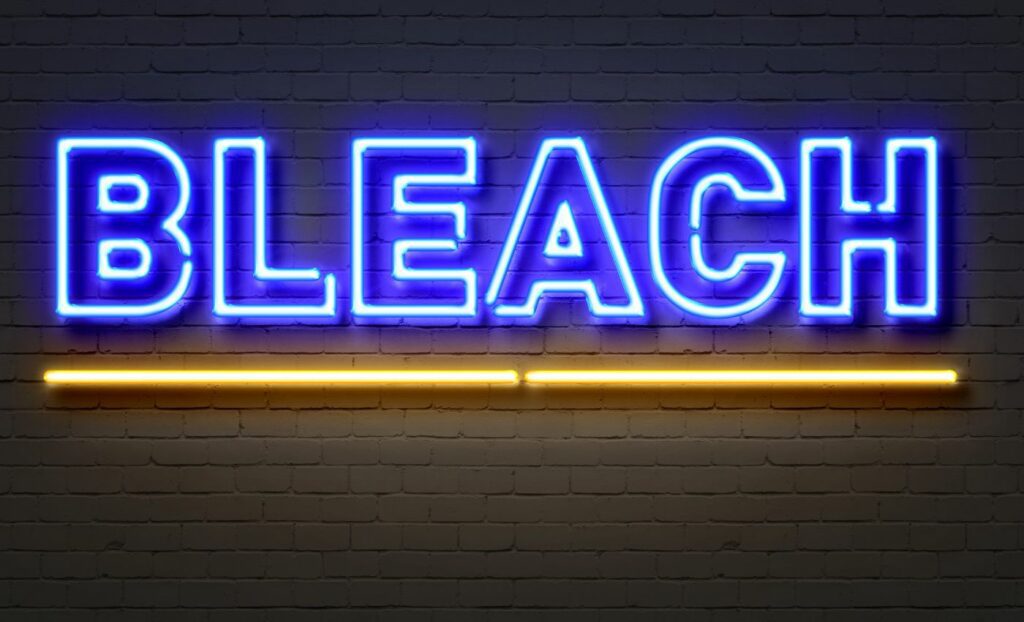Chlorine bleach is a powerful cleaner that is able to disinfect and sanitize all kinds of surfaces. We use a cleaner with water to make a solution. However, have you ever been in a situation where the bleach did work probably as advertised or the solution damaged your facilities? Some kinds of cleaner can be […]

Chlorine bleach is a powerful cleaner that is able to disinfect and sanitize all kinds of surfaces. We use a cleaner with water to make a solution. However, have you ever been in a situation where the bleach did work probably as advertised or the solution damaged your facilities? Some kinds of cleaner can be excessively harsh if it doesn’t dilute with a sufficient amount of water. Else, it may be out of function if diluted with too much water. Understanding the necessity of bleach dilution, Sparkling and Beyond will introduce you to some common-using bleach-to-water ratios for spray bottles and explain how to calculate the solution for each type of spray bottle.
The dilution ratio is a ratio that indicates how many parts of the concentrated product should be to be diluted to how many parts of the dilutant or extender (usually water or a solvent). For example, 1 ounce to a gallon (128 ounces) would be 1:128, not 128:1. This ratio is different between bleaches.
When mixing bleach, it is crucial to follow the correct dilution ratios to ensure the solution is effective and safe.

Bleach to water dilution ratio
Caution:* Since bleach can be harmful to your skin, it is better that you do anything with gloves and a mask.*
Metric calculations such as liters can also be calculated. You just need to convert the metric figures to gallons or ounces prior to starting. Common metric volume measurements and their English equivalents are listed below:
1 quart = 0.946 mL
1 gallon = 3.785 liters
1 liter = 0.264 gallons
4 liters = 1.056 gallons
Calculating the dilution ratio for a spray bottle is a crucial step in creating an effective bleach solution. To ensure you get the right mix, follow these steps:
Determine the Total Parts: Identify the total number of parts in the solution. For instance, a 1:4 dilution ratio means 1 part bleach and 4 parts water, totaling 5 parts.
Divide the Total Volume: Take the maximum amount of liquid your spray bottle can hold (X oz) and divide it by the total number of parts (5 in this example).
Calculate Water Amount: Multiply the result by the number of parts of the dilutant (water). For a 1:4 ratio, this would be 4 parts.
Calculate Bleach Amount: Multiply the result by the number of parts of the concentrate (bleach). For a 1:4 ratio, this would be 1 part.
For example, if you have a 16 oz spray bottle and want to create a 1:4 dilution ratio:
Divide 16 oz by 5 parts = 3.2 oz per part
Multiply 3.2 oz by 4 parts of water = 12.8 oz of water
Multiply 3.2 oz by 1 part of bleach = 3.2 oz of bleach
By following these steps, you can accurately mix a bleach solution in your spray bottle, ensuring effective disinfection.
To prepare the bleach solution, follow these straightforward steps:
Measure the Water: Using a measuring cup, fill your spray bottle with the calculated amount of water.
Add the Bleach: Carefully add the calculated amount of bleach to the water in the spray bottle.
Mix the Solution: Close the spray bottle securely and shake it well to ensure the bleach and water are thoroughly mixed.
Label the Bottle: Clearly label the spray bottle with the date and the dilution ratio to keep track of its potency.
For an even mix, you can use a sprayer mechanism, but always follow the manufacturer’s instructions to avoid any mishaps. Accurate measurement is key to creating an effective bleach solution that will disinfect surfaces properly.
When working with bleach, safety is paramount to avoid accidents and ensure effective disinfection. Here are some best practices to follow:
Wear Protective Gear: Always wear gloves and a mask to protect your skin and eyes from irritation.
Ensure Ventilation: Work in a well-ventilated area to avoid inhaling bleach fumes.
Avoid Mixing Chemicals: Never mix bleach with other household cleaners or chemicals, as this can produce toxic gases.
Use a Damp Cloth: Wipe down surfaces with a damp cloth to prevent the bleach solution from evaporating too quickly.
Read Labels: Always read the label and follow the manufacturer’s instructions for the specific bleach product you are using.
Non-Porous Surfaces: Use the bleach solution on non-porous surfaces like countertops, sinks, and floors for best results.
Avoid Direct Sunlight: Do not use bleach in direct sunlight, as it can degrade the solution.
Air Dry Surfaces: Allow surfaces to air dry after disinfecting to prevent water spots.
High-Touch Areas: Focus on high-touch surfaces such as doorknobs, light switches, and remotes to kill most germs effectively.
By adhering to these safety precautions and best practices, you can ensure that your bleach solution is both safe and effective, keeping your home or office clean and germ-free.

Calculate Bleach Dilution Ratios
Let’s take an example you want to make a X oz spray bottle with the 1:4 dilution ratio (1 part of chemical and 4 parts of water). X is the maximum amount of liquid that the bottle can contain. Now, you must make clear how much water and chemical should be used in this case. Follow the steps below:
Bleach solutions typically contain sodium hypochlorite, which is the active ingredient responsible for disinfection.
Step 1: Find how many parts we will have when mixing the solution. Let’s move on with the above example with the measurement unit is ounce, a dilution ratio is 1:4 so we would need 1 part (water) +4 parts (bleach)= 5 parts in total.
Step 2: As you divide X oz into 5 parts, each part will be X/5 oz.
Step 3: As the dilution ratio is 1:4
=> the water you need: 4 * X/5 = 4X/5 => the chemical you need: 1 *X/5 = X/5

Cleaning with bleach
There are some common volumes of spray bottles. With our above instructions, you may now calculate and make a solution by yourself. If you have not clearly understood the recipe, let’s check another example:
|
Bleach to water ratio for 32 oz spray bottle with the dilution ratio of 1:4: 32/5 = 6.4 oz/part water needed: 4 * 6.4 = 25.6 oz bleach needed: 1 * 6.4 = 6.4 oz=> Total: 25.6 + 6.4 = 32 oz |
Bleach to water ratio for 12 oz spray bottle with the dilution ratio 1: 512/6 = 2 oz/part water needed: 5*2 = 10 oz bleach needed: 1 * 2 = 2 oz=> Total: 10 + 2 = 12 oz |
|---|---|
|
Bleach to water ratio for 24 oz spray bottle with the dilution ratio: 1:424/5 = 4.8 oz/part water needed: 4*4.8 = 19.2 oz bleach needed: 1 * 4.8 = 4.8 oz=> Total: 19.2 + 4.8 = 24 oz |
Bleach to water ratio for 16 oz spray bottle with the dilution ratio: 1:416/5 = 3.2 oz/part water needed: 4 * 3.2 = 12.8 oz bleach needed: 1 + 3.2 = 3.2 oz=> Total: 12.8 + 3.2 = 16 oz |
|
Bleach to water ratio for 28 oz spray bottle with the dilution ratio: 1: 428/5 = 5.6 oz/part water needed: 4 * 5.6 = 22.4 oz bleach needed: 1 * 5.6 = 5.6 oz=> Total: 22.4 + 5.6 = 28 oz |
Bleach to water ratio for 25 oz spray bottle with the dilution ratio: 1:425/5 = 5 oz/part water needed: 45 = 20 oz bleach needed: 15 = 5 oz=> Total: 20 + 5 = 25 oz |
How To Calculate Dilution Ratios Of Gallon Containers: Basically, a gallon is 128oz. The process is exactly the same as the 32 oz way.
A common mistake in calculating how much-diluted bleach will result from a fixed ratio is forgetting to add the amount of the concentrate to the total. For example, 1 ounce of a product diluted at 1:64 makes 65 ounces, not 64. This includes not only the 64 ounces of dilutant but also the original 1 ounce of concentrate.
Sanitizing products with a variety of dilution ratios may make failure if used indiscriminately. Being aware of how to calculate bleach to water ratio for spray bottles properly is a must for people who choose bleaches to sanitize or disinfect their home facilities. Properly mixing bleach is essential to ensure the solution is both safe and effective for disinfection. However, mixing chemicals seems not an easy task for everyone. if you are not familiar with this, why don’t you give Sparkling and Beyond a call for further help? You may find many helpful cleaning tips for your house on our website that have been studied carefully and are now being practiced by our excellent cleaning service department including house cleaning, office cleaning, AirBnB cleaning, etc. Our enthusiastic staff always desire for helping many people stay away from boring household chores so we are always willing to handle your chore at any time so feel free to contact us.
![]()
As the admin of Sparkling & Beyond, I bring a wealth of knowledge and passion for excellence in the cleaning industry. With years of experience in providing top-notch cleaning solutions, I am dedicated to sharing valuable insights and tips to help maintain pristine and healthy living environments. My mission is to ensure every home and office we service sparkles with cleanliness and comfort.
3834 total views , 4 views today
![]()